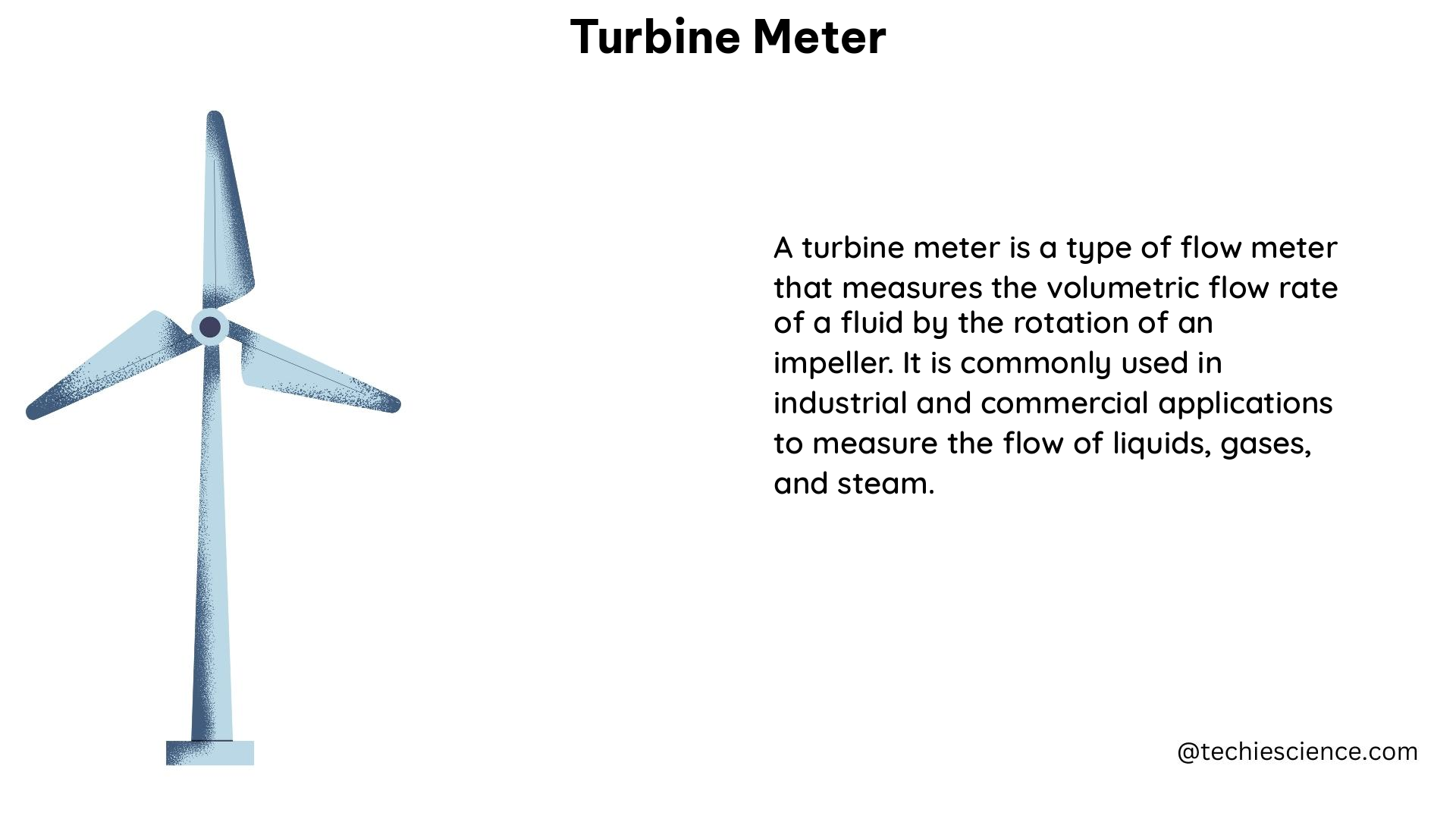Turbine meters are widely used flow measurement devices that offer high accuracy and precision in quantifying the bulk movement of fluids, particularly natural gas and liquids. These meters utilize a rotating turbine element to measure flow rates, providing a versatile solution for various industrial applications. With their ability to handle high flow rates and minimal pressure loss, turbine meters have become an essential tool in the field of flow measurement.
Understanding the Turbine Meter Mechanism
The turbine meter’s measuring element is designed to avoid occupying or severely restricting the entire path of flow, allowing for higher flow rates and reduced pressure loss compared to displacement-type meters. The rotation speed of the turbine is directly proportional to the fluid velocity, enabling the meter to accurately measure the volumetric flow rate.
The accuracy of a turbine meter is influenced by several key factors:
- Fluid Velocity: The rotation speed of the turbine is directly dependent on the fluid velocity, making it a critical parameter for accurate flow measurement.
- Turbine Rotation Speed: The number of rotations per unit time is directly related to the volumetric flow rate, and this relationship must be precisely calibrated for optimal performance.
- Number of Turbine Blades: The number of blades on the turbine can significantly impact the meter’s accuracy, with studies suggesting an optimal number of six blades for improved performance.
- Turbine Lead: The turbine lead, or the distance between the turbine blades, is another crucial factor that can influence the meter’s accuracy. Sarallah and Afshin (2021) found that an optimal turbine lead of 20 mm can enhance the meter’s performance.
Optimizing Turbine Meter Performance

Researchers have explored various approaches to optimize the performance of turbine meters, leveraging advanced techniques such as computational fluid dynamics (CFD) analysis and response surface methodology.
Casing Injection Optimization
A study by Sarallah and Afshin (2021) focused on optimizing the performance of an axial turbine meter with a casing injection system. Using response surface methodology, they found that the number of turbine blades and the turbine lead had significant impacts on the meter’s accuracy. The optimal configuration was determined to be six blades and a 20 mm turbine lead.
Flow Field Characteristics Analysis
Another study analyzed the flow field characteristics within a turbine flow well logging tool using CFD analysis. The researchers found that reducing turbulent flow fluctuations within the measurement flow channel had a direct impact on the measurement stability of the turbine. Structural modifications to the front and rear guide grids, as well as the turbine itself, were identified as critical factors in influencing the internal turbulence distribution and its fluctuations.
Turbine Meter Design and Materials
Turbine meters are available in a wide range of sizes and materials to suit various applications and fluid conditions. The meter bodies are commonly made of bronze, cast iron, or ductile iron, while the internal turbine elements can be constructed from plastic or non-corrosive metal alloys.
Specialized Turbine Meters
One specialized type of turbine meter is the fire meter, which is designed to handle the high flow rates required in fire protection systems. These meters are approved for use in such applications, ensuring reliable and accurate flow measurement during critical emergency situations.
Factors Affecting Turbine Meter Accuracy
While turbine meters are generally accurate in normal working conditions, they can be greatly affected by the flow profile and fluid conditions. Factors such as fluid viscosity, density, and the presence of contaminants or entrained solids can all impact the meter’s performance.
To maintain optimal accuracy, regular calibration and maintenance of turbine meters are essential. Proper installation, including ensuring the correct flow profile and minimizing turbulence, can also contribute to the meter’s reliable operation.
Conclusion
Turbine meters are versatile and widely used flow measurement devices that offer high accuracy and precision in quantifying the flow rates of various fluids, including natural gas and liquids. By understanding the key factors that influence their performance, such as fluid velocity, turbine rotation speed, and the number of blades, engineers and technicians can optimize the design and operation of these meters to achieve the best possible results.
Through the application of advanced techniques like CFD analysis and response surface methodology, researchers have made significant strides in improving the performance and accuracy of turbine meters. These advancements, coupled with the availability of a wide range of sizes and materials, make turbine meters a valuable tool in the field of flow measurement.
References:
- Sarallah, A., & Afshin, G. (2021). Performance optimization of an axial turbine with a casing injection based on response surface methodology. Journal of Brazillian Society of Mechanical Sciences and Engineering, 43, 435.
- Challenges in Turbine Flow Metering System: An Overview. (2021). ResearchGate.
- Dynamics of turbine flow meters. (2007). TUE Research portal.
- TURBINE FLOWMETER. (n.d.). Tokico Systems.
- Flow measurement. (2021). Wikipedia.
- Flow Measurement Principles and Their Application. (n.d.). Emerson.
- Turbine Flow Meter Working Principle. (n.d.). Endress+Hauser.
- Turbine Flow Meter Selection Guide. (n.d.). AW-Lake Company.
- Turbine Flow Meter Operation and Installation. (n.d.). KROHNE.
- Turbine Flow Meter Calibration and Maintenance. (n.d.). Siemens.

The lambdageeks.com Core SME Team is a group of experienced subject matter experts from diverse scientific and technical fields including Physics, Chemistry, Technology,Electronics & Electrical Engineering, Automotive, Mechanical Engineering. Our team collaborates to create high-quality, well-researched articles on a wide range of science and technology topics for the lambdageeks.com website.
All Our Senior SME are having more than 7 Years of experience in the respective fields . They are either Working Industry Professionals or assocaited With different Universities. Refer Our Authors Page to get to know About our Core SMEs.